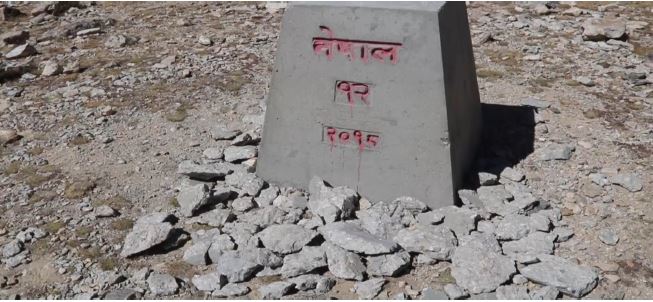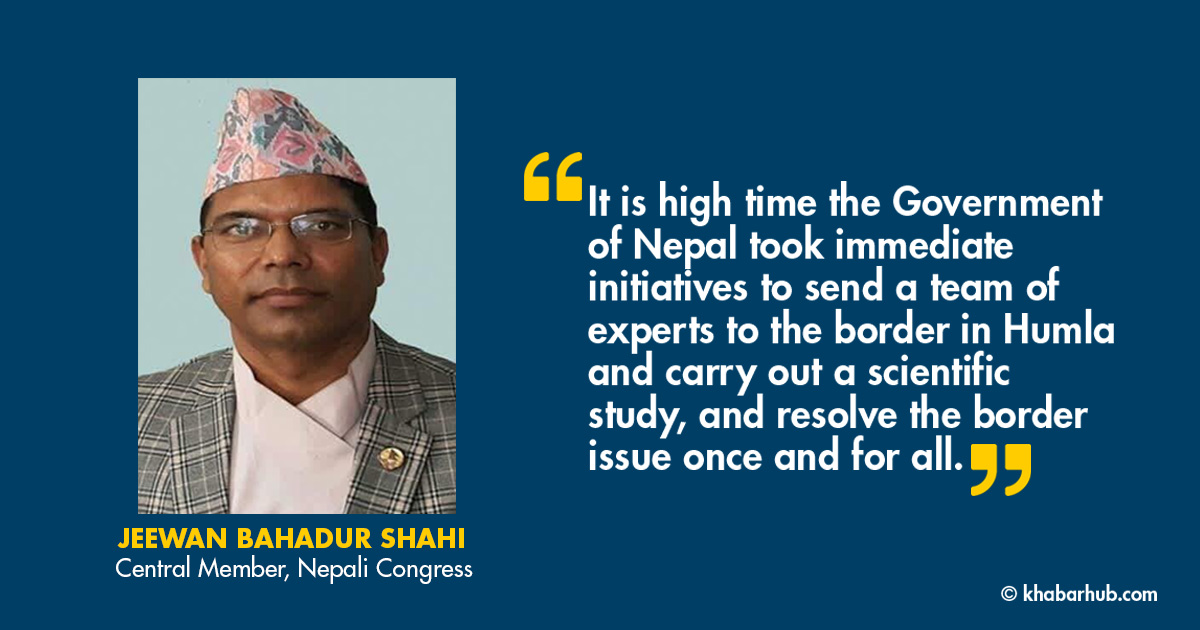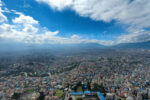It is, in fact, regrettable to note that Nepal’s neighboring countries — India and China — have encroached Nepal’s territory in the east, west, south (by India) and north (by China).
Based on my field visit to Humla’s northern belt, I found that several kilometers of Nepal’s land have been encroached by China.
It should be noted that a treaty signed between Nepal and China in 1976 had established the boundary line, and was later ratified in August 1982 following a dispute regarding the boundary line in 1965/66.
The boundary line was fixed on the basis of the watershed boundary principle, i.e. the peak and Dhalo/Khola under mutual understanding.
There are altogether 10 pillars — 12, 11, 10, 9 (1), 9(2), 8 (1), 7 (1) 6 (1), 5 (1) and 5 (2) in Humla district. While pillars 9 (1), 8(1), 7 (1) 6 (1), 5 (1) belong Nepal; 12, 11, 10, 9 (2) and 5 (2) are joint pillars along the northern border.
Since the majority of the pillars lie in the remote areas of the district, Nepali authorities hardly reach there for inspection.
Meanwhile, the disputed pillar no 12 on the northern border is placed on an elevation of 5,018 meters at Lapcha Bhanjang, Namkha rural municipality ward no 6 of the Limi valley from where the Manasarovar Lake and Mt. Kailash can be viewed from the Nepali land.

Even the alignment of the recently constructed Pillar no 12 at Lapcha Bhanjyang has been found to have been changed.
The Lapcha Bhanjyang stretches up to Gappudocha and Lalongjong. According to a historical fact, this land has been used as a pasture by the Nepali locals of Limi village.
Locals and representatives of Namkha-6 of Limi village complained that the Chinese side has constructed nine buildings in the Nepali territory named Lalongjong in June 2020.
The District Development Committee, Humla with the support of the Government of Nepal has constructed a local trail near the Chinese border in 2058 BS in the presence of high-level officials from both Nepal and China.
In 2066 BS, a road named Limi-Lapcha was constructed from Gappudocha with the permission of higher Chinese authorities.
Gappudocha is around 2 to 3 kilometers in the north-west of Lalongjong and Lapcha Bhanjyang.
Similarly, the Pillar no 11, which lies at a height of 5,202 meters, is in Takulle peak, 77 kilometers away from Pillar 12.
Likewise, the Pillar no 9(2) lies in the Dashgaja area (no-man’s land) and just above is Pillar no 10 near China’s Sera village.
Locals and representatives of Namkha-6 of Limi village complained that the Chinese side has constructed nine buildings in the Nepali territory named Lalongjong in June 2020.
The issue was first raised in 2072 BS when the Chinese constructed temporary clay huts with three rooms.
The Nepali local official had then held a dialogue with the Chinese officials during which the Chinese officials had told the Nepali authorities that the building was constructed for livestock quarantine, which they claimed would also be useful to the health of the livestock on the Nepali side.
It had then come as good news to the Nepali side assuming that it was a generosity on the part of China to construct the hut meant for quarantining livestock.
The Nepali authorities had then ignored the complaints of the local people.
More interestingly, a new pillar no 12 has been erected by the Chinese side at Lapcha, and is evident that its orientation has been changed. It looks like the pillar has been erected some six months ago, which is against the international border protocol.
Meanwhile, the locals raised serious concern as the Chinese side illegally constructed nine concrete permanent buildings in the same place in Lalongjong.
On September 30, 2020, I along with my team, made a field visit to the border area in Humla district where China had encroached the Nepali territory.
After making a field visit of 11 days, we returned to Simkot, Humla’s district headquarters after finding that China has encroached Nepali territory in Humla.
The report, which we made public, has categorically mentioned the encroachment of Nepali territory by China.
We have also clearly said that China has constructed nine buildings in Nepal’s territory at the Lalongjong area near Pillar no. 12 in the district.
More interestingly, a new pillar no 12 has been erected by the Chinese side at Lapcha, and is evident that its orientation has been changed. It looks like the pillar has been erected some six months ago, which is against the international border protocol.
Regarding the other border pillars, they have not been repaired by the joint officials of Nepal and China for the last 13 years. It may be noted that the repair of the pillars was carried out in 2007 AD.
What has to be taken into consideration is that the border pillars can only be repaired under the joint observation of the authorities of Nepal and China.
However, the Chinese side has unilaterally replaced the pillar leaving the Government of Nepal in the dark about it.
Surprisingly enough, even the clock near the Nallu Bhanjyang in Nepal shows China time.
Similar is the case at the Nara Pass. This type of time zone does not happen in other countries in the world.
Another aspect is that the Chinese side has also fenced the pillar No 9 (2) at the Hilsa border, which is a blatant violation of the border protocol. Likewise, the Nepali gate is around 50 meters away from the pillar.
Likewise, a Nepali pillar has been fenced by the Chinese side in the Kith area of Nepal.
Surprisingly, the Chinese security personnel do not allow Nepali locals to use their land in the area where pillars 5 (1), 5 (2) and 6 (1) are placed.
Even though Pillar No 6 (1) and 5 (1) are Nepali pillars, Chinese officials have built fences on the Nepali side placing pillars into the territory.
This shows that the Chinese side can dismantle the pillars any time and reconstruct another one like in Limi Lapcha 12 no pillar.
Nepali authorities hardly reach the Kith area because of its geographical difficulties.
It is, in fact, shame on the part of the Nepal government that it was quick to announce that China has not encroached an inch of Nepali territory in the Humla district.
The Chinese side keeps on obstructing the Nepali team even if they make a visit to the area.
Last month, the Chinese security personnel even pelted stones at Nepal’s Armed Police Force personnel when the latter went to inspect the pillars 5 (1), 5 (2) and 6 (1) in the area.
There is a heavy presence of Chinese security on the northern border. However, Nepal’s security presence is extremely poor as they cannot stay in the area during the winter due to poor infrastructure.
From this evidence, even a layman would conclude that China has encroached on Nepali territory in Humla.
However, the Government of Nepal seems to be least bothered about taking the initiative to resolve the border dispute with China.
It is, in fact, shame on the part of the Nepal government that it was quick to announce that China has not encroached an inch of Nepali territory in the Humla district.
It is high time that the government sent a team of experts to the Nepal-China border in Humla district to carry out a scientific study and send a diplomatic note to the government of China to settle the border disputes for good.









Comment